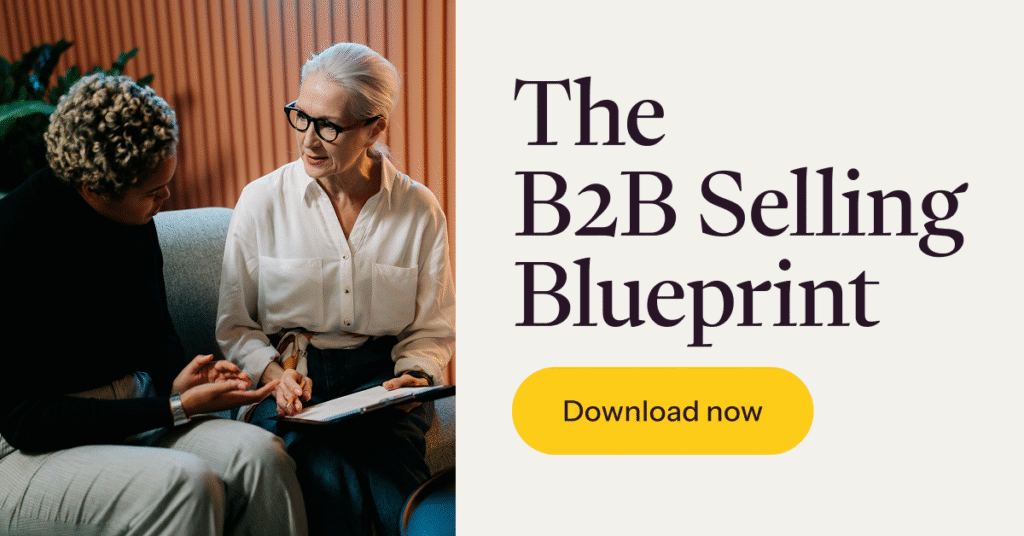B2B selling can feel slow, expensive, and unpredictable.
Sales cycles are longer. Buyers involve more stakeholders, and expectations are much higher. B2B clients don’t just want a good course. They want something that integrates seamlessly into their training programs, scales across teams, and delivers measurable outcomes.
Meeting those expectations often comes at a cost of more administrative overhead. Without the right systems and strategy, a high-revenue sale has the potential to turn into a high-effort drain — where overhead grows faster than profit.
To scale B2B online course sales and grow your revenue, you need to do three things well:
- Automate important yet tedious tasks like course enrollment and payment collection
- Shorten the sales cycle
- Deliver a consistent, high-quality B2B client experience — even at scale
In this article, we’ll walk through five strategies that help you do exactly that — so you can sell and scale smarter, and turn B2B sales into a repeatable growth engine.
What is B2B selling?
B2B selling refers to the process of companies buying and selling goods or services with other businesses. It is a massive market, accounting for nearly 50 cents of every dollar spent in the U.S. economy.
This can cover anything from raw materials to finished products. B2B selling can be broken down into three main categories: direct sales, indirect sales, and online/digital sales.
- Direct sales: Refers to a sales rep contacting potential customers to discuss their product or service and engage in negotiations.
- Indirect sales: Refers to a company selling its products to other businesses through a third party such as distributors, resellers, agents, etc.
- Online/digital sales: Refers to B2B sales that take place online via e-commerce sites or digital marketplaces.
- Bulk sales: Refers to when a business sells a large collection of inventory or assets to one single buyer, often for a discounted price.
If you are a business that traditionally sells products or services in a B2C context, making the transition to B2B sales can allow you to significantly expand your business and revenue opportunities.
For example: Let’s say that your business traditionally sells online courses directly to consumers to generate revenue. You might consider selling your courses in bulk directly to larger businesses and companies so they can offer them to their employees, customers or partners themselves. This would allow you to significantly increase the amount of revenue you generate from a single transaction, as you would be charging for the bulk sale and not just one customer.
Learn more: B2B Online Course Sales: Practical Strategies For Increasing Your Revenue
Companies are increasingly using digital solutions to help streamline the sales process. According to Gartner research, there is a steady shift of customer preferences from in-person sales interactions to digital channels.
How does B2B differ from B2C selling?
B2B and business-to-customer (B2C) selling are similar in many ways, but there are some key differences.
Experience vs relationship
In B2C sales, the focus is often placed on providing an enjoyable and direct shopping experience to customers. The primary goal is to streamline the sales process and reach as many customers as possible.
For B2B sales on the other hand, the focus is on creating long-term relationships with customers such as organizations and businesses that can be mutually beneficial for both parties.
Customization
When preparing for mass-market customer selling, personalization of products or services isn’t usually necessary; as B2C buyers don’t typically need or expect customized solutions or tailored offers.
In B2B sales though, customization and personalization of products or services is often expected, especially if you are selling a digital product.
Buyer focus
Unlike businesses, individual customers are usually making decisions based on their individual needs, emotions and desires. A key difference when it comes to B2B selling is that the decision to purchase usually has to be put through several decision-makers who are usually focused on factors such as price, quality, and return on investment (ROI) when making a purchase.
Still, some of the same principles of B2C selling – like providing a great customer experience – still apply to B2B sales processes.
Why is B2B selling changing?
The B2B selling landscape is changing due to several factors.
- The emergence of digital solutions: Digital solutions are becoming more and more advanced, making it easier for buyers to research information on their own. This cuts down on the need for direct sales reps and makes the buying process much faster and simpler.
- Increased competition: With technology advancing at an ever-increasing rate, customers have access to a wider range of options when it comes to purchasing goods or services.
- More data available: Those same technological advances also offer more data than ever before. Companies can use this information to better understand their target customers, customize offers, and build relationships that last.
Customers have become much more sophisticated in how they go about solving a problem. They aren’t as willing to accept pitches, and instead just want a customer journey that doesn’t have any obstacles.
B2B selling strategies to increase your course revenue
Here are five strategies to help you grow B2B course sales and revenue:
1. Standardize your B2B selling process
Standardize your B2B selling process to shorten the sales cycle. B2B sales cycles can be two months or longer, but a disjointed selling process makes it significantly longer.
Instead of guiding the buyer toward a clear outcome, it creates extra calls, unclear follow-ups or repetitive conversations that waste time and do not move the decision forward. Standardization solves this by breaking the buyer journey into clear, repeatable stages (like discovery, demo, proposal, etc.). Each stage serves two main purposes:
- Qualify the buyer: You assess whether they’re the right fit and worth pursuing further.
- Move them closer to a decision: You guide them toward saying yes by addressing concerns and delivering the right info at the right time.
And because the process is mapped out, you and your team can analyze where deals slow down or fall apart, spot inefficiencies, and improve how you sell, All of this help you close deals faster because you’re not wasting time on poorly-fit prospects and you can identify and address buyer concerns proactively before they cost you the deal.
To standardize your sales process, you need to:
Map the b2b customer journey
Create a visual representation of every touch point a customer has with your business — from the first point of contact until they make a purchase. Then connect each touchpoint to the different buyer journey stages.
For example, your social media channels can fall under the awareness stage because that’s where a customer hears about your brand for the first time. And your website might fall into the consideration stage because that’s where the customer fills out a lead form or submits their email address for further information.
Once you understand where and how the customer interacts with your business, you can improve each touch point and ensure that the interaction moves the customer towards making a purchase.
Learn more: How to create the perfect customer journey map
Segment your customers
Categorize your b2b customers based on similar characteristics, such as company size, location, industry, budget, etc. This helps you to personalize interactions to match their specific needs and expectations.
For example, you can offer tiered pricing to customers with lower budgets to encourage them to make a purchase. And use value-based pricing for higher-tier customers because they can afford it. Some other things to consider are:
- Role
- Department
- Buying motivation
- Industry trends
Customer segmentation allows you get to know your customers and tailor your offers to help build trust and loyalty with them.
Qualify leads
Spending your time pursuing leads that aren’t going to convert can become a waste of your team’s time and resources. That’s why lead qualification is so important.
You’ll need to develop criteria for deciding which leads are worth pursuing and which ones should be discarded or nurtured further over time. The biggest thing to remember here is authority. Does your lead or point of contact have the authority to make a final purchase decision? If not, can they connect you with someone who does?
Create a sales pitch
Use standard templates and frameworks you can use to create an effective sales pitch for turning prospects and leads into customers.
For example, the AIDA (Attention, Interest, Desire & Action) framework is a great tool for creating persuasive pitches that get results. Another is the PAS (Problem-Agitate-Solve) framework, which is used to identify customer pain points and create a solution.
These can be matched with specific segments or blended to create what seems like a personalized (yet consistent) pitch.
2. Sell team licenses or bulk course access
Instead of selling individual seats for your courses, you can offer companies and organizations learning packages for their teams — think 5, 10, 50+ users at once. When your course can be rolled out to a whole team in one go — with consistent content, a streamlined payment system, and easier internal management — it becomes a better fit for company-wide training.
B2B teams don’t want piecemeal training. They want a consistent learning experience that’s easy to implement and manage. When everyone gets access to the same course at the same time, it’s simpler to track progress, measure impact, and maintain quality across the board. This makes it much easier for companies to roll out your training across entire departments without the hassle of managing individual purchases.
You make more money too because team licenses generate higher deal sizes per sale. Instead of earning $300 from one single sale to a b2b customer, you could earn $3,000 from selling a 10-seat package to a b2b customer — or $15,000 from a 50-seat license. You also close bigger deals with less effort and less marketing spend per user.
With an enterprise-ready LMS like Thinkific, you can sell bulk course access to your b2b clients using the Group Orders feature available in TCommerce — Thinkific’s integrated B2B selling suite. With this feature in your toolkit, your clients can:
- Add new seats to purchased courses themselves using self-service checkout options
- Track and manage all course enrollments across the organization from one dashboard
- Monitor learner performance by team and individual from a centralized analytics view
That way, they can easily scale course training as their organization grows. And you can offer a streamlined experience and increase course sales and revenue without dealing with unnecessary overhead — letting Thinkific take care of all the admin work behind the scenes.

To increase your b2b revenue further, consider offering tiered pricing or discounts based on company size. For example, you can offer a 5% discount to businesses buying 50+ licenses to further sweeten the deal.
3. Integrate checkout and enrollment
Make the process of onboarding your b2b clients seamless by automatically enrolling users as soon as payment is completed. When checkout and enrollment are connected, your clients don’t have to wait for you to manually add users — their team gets immediate access, and the training can start right away.
This creates a smoother, more professional experience for your buyers and also saves you hours of admin work. Manually enrolling multiple users per account can be time consuming when your’re looking to grow. With automation, you can handle bulk course purchases effortlessly and deliver a great client experience at scale.
TCommerce’s new Invoicing feature makes it super easy to integrate payments and checkout for B2B course sales. As an existing customer, you can send customized invoices and collect payments right within Thinkific. Once payment is completed, your b2b client and their users are automatically enrolled into the course purchased— without any manual admin input on your end.

The best part is that all your sales and revenue data stays within the same platform — making it easy to access them when tax period comes around, and saving you time pulling in data from five different platforms to prepare your accounting books.
4. Offer white-label or custom-branded versions
A white-label or custom-branded course allows clients to tailor your content to match their brand. They can add their logo, colors, and messaging — making the course feel like an internal training asset rather than a third-party product.
This creates a cohesive brand experience for their teams and makes adoption easier across departments. It also increases the value of your offer, allowing you to charge more and position your course as a premium, enterprise-ready solution.
Thinkific Plus offers a full-fledged white-label LMS — empowering your clients to deliver fully branded online learning experiences. With this, your clients can:
- Customize the entire course experience — including adding a custom URL, brand colors and their logo
- Integrate Thinkific with internal software like their CMS and CRM using our advanced API
- Create branded community spaces for peer-based learning
Related: The best white-label learning management systems for organizations.
5. Use value-based pricing
Value-based pricing means setting your course price based on the perceived value to the buyer, not just your costs or what competitors charge. In B2B, this means pricing according to the outcomes your course helps the company achieve (e.g., faster onboarding, higher sales performance, improved compliance), rather than the number of videos or modules it includes.
It increases your revenue because:
- You capture more revenue from high-impact buyers who are willing to pay for results, not just content.
- You avoid underpricing, especially when your course delivers real business outcomes.
- It allows you to tier your offerings, charging more for versions that include coaching, analytics, or customization — all of which increase perceived value.
Here are four ways to leverage value-based pricing for B2B course sales:
- Segment by business size or need: Offer different pricing for startups vs. enterprise clients.
- Bundle with outcomes: Include services like certification, reporting dashboards, or onboarding support that reinforce the ROI.
- Price relative to alternatives: If your course helps teams save time or avoid hiring an outside trainer, price accordingly — and highlight that comparison.
- Use testimonials or case studies: Show real business results to justify a higher price point.
B2B selling best practices for 2025
Where does the changing B2B selling landscape leave you? Looking for ways to provide those customers with an effortless and seamless buying experience. Here are some best practices for your business or organization to focus on in 2025.
1. Conduct customer research
Research is the key to success in any business, and that’s especially true when it comes to B2B selling. You need to know who your customers are, what their needs are, and how you can best meet them.
To do this you’ll need to invest time into researching your market – understanding competitor pricing strategies, customer personas, industry trends & more.
Don’t just assume you know what customers want. Launch customer surveys with thoughtful questions, and monitor answers closely. Conducting customer research will help you understand your customers’ needs better, as well as build trust with them. Look for customer feedback whenever possible through social media, surveys, customer interviews, and more.
2. Nurture your leads
Lead nurturing is the process of engaging with potential customers on an ongoing basis. This involves providing them with helpful content tailored to their interests and needs and building relationships and trust over time.
This doesn’t end after a sale is made – it’s an ongoing process of communication. Your business should have a plan in place to stay in contact with potential and current customers through strategies like personalized emails, b2b content marketing, or monthly newsletters. Email marketing is a great way to engage leads and gather insights and date about your prospects. Every prospect is a chance to learn something new.
Once the sales is made, your business should also consider implementing a customer success strategy to ensure that your customers find value in your product or service and stick around for the long term.
3. Maximize time with B2B buyers
When you do get the chance to meet a customer in person (or on the phone), make sure you’re making the most of it. Show up prepared with relevant information and data that will help solve the customer’s problem.
Focus on building trust and understanding what their needs are so you can suggest solutions accurately.
Make sure your sales team is well-versed in customer service and success as well – this will be key for building relationships with customers over time.
Finally, don’t forget about follow-up! Following up after each meeting is essential for staying top of mind with buyers and helping build lasting relationships.
4. Offer self-service and digital purchasing options
No matter how well you prepare, some customers just don’t want to interact with a sales rep or go through a lengthy and tedious purchasing process. That’s why it’s important to provide self-service and digital purchasing options to customers who want more control over the buying process.
This could include online ordering and bulk selling (if you are in the B2B online course creation business), automated customer service bots, or even an easy-to-use web portal for managing orders and accounts.
Offering these kinds of solutions will make it easier (and more efficient) for customers to purchase your products and services without having to wait on a sales rep every time they need something.
5. Don’t waste time with logistics
Self-serve and digital options can also benefit sales teams, cutting down on time-consuming logistics. Instead of spending time on shipment tracking and order fulfillment, automated and digital solutions can help sales representatives gain time back to focus on important tasks such as nurturing leads.
This frees up more time for teams to focus on sales enablement and customer engagement, rather than dealing with paperwork or back-end tasks. If you can streamline the process, customers will appreciate it even more.
6. Become a strategic growth partner
It’s no longer enough to just provide a product or service. Customers now want more than that – they want partners that can help them succeed in the long term.
Businesses need to become strategic partners with their customers and look at the bigger picture. This means providing exceptional customer service and support, and solutions that go beyond basic products or services, such as advice, training, or insights into industry trends.
Position yourself as the go-to expert in your industry and offer value beyond the sale.
7. Customer service is king
At the end of the day, customers want to feel like they’re being taken care of.
For your business, this means expanding beyond providing everyday customer service tasks such as responding quickly and efficiently to customer inquiries, addressing any problems or concerns as soon as possible, and following up with customers after their purchase.
You should also be looking for ways to improve customer service and guide your customers toward success – whether that’s through automation or investing in better tools and resources.
Tricks for better B2B relationships
Building good relationships with your customers is essential for successful B2B selling. Here are some tips to help you do just that.
- Be transparent: Make sure the customer knows exactly what they’re getting when they sign up for a service or product.
- Provide value beyond the purchase: Show customers how their purchase will benefit them in the long run, not just immediately after signing up.
- Listen and understand their needs: Listen actively to customers’ wants and needs so you can provide them with the best possible solution.
- Be proactive: Look for opportunities to offer customers advice, help troubleshoot issues or provide additional resources that can help them succeed.
If you spend a little time focused on their needs, instead of trying to sell them something, customers will respond positively and become more engaged.
Things to avoid in B2B selling
There are a handful of common traps that B2B sellers fall into, especially now that digital solutions are becoming more prevalent.
- Trying to sell too much, too soon: You need to understand the customer’s needs before you can offer them a solution.
- Being too aggressive with sales tactics: If customers feel like they’re being pressured into signing up for something, it will leave a sour taste in their mouths and may lead them to look elsewhere.
- Not following up after the purchase: Customers appreciate when companies follow up after the sale is made – this shows that you genuinely care about providing good service and not just making a sale.
- Ignoring customer feedback: If customers are providing you with feedback, it’s critical to consider their suggestions. This will help you improve your product or service and make sure that customers stay satisfied.
- Not providing enough value: As mentioned before, customers need to feel like they’re getting real value from their purchase. Make sure whatever you offer provides a noticeable benefit for the customer. Online courses are a great way to teach customers how to gain maximum value from your product or service.
Most importantly, offer a way for them to purchase without friction – no one wants to go through a long and complicated process.
Example of B2B tools
To help you succeed in the ever-changing B2B selling landscape, there are several tools available.
- CRM software: Customer relationship management (CRM) software allows businesses to store and analyze customer data such as contact information, preferences, and purchase history. This provides valuable insight into how best to target customers for sales campaigns.
- Data analytics platforms: Data analytics platforms allow businesses to dive deeper into customer behavior by tracking website interactions, analyzing customer feedback, and more. This helps identify trends that can be used to inform future sales strategies.
- Learning Management Systems: Learning management systems (LMS) allow businesses to create online learning environments for their employees, customers and partners. This helps drive customer success and generation of revenue.
These tools can help make the sales process more efficient and provide customers with a better overall experience.
Start Your B2B Journey Today With The B2B Selling Blueprint

Download our free guide with practical steps, automation tips, and the foundational framework you need to confidently launch or scale your B2B learning program—without adding operational complexity.
This post was originally created in 2023 and was updated in May, 2025 for relevancy.




